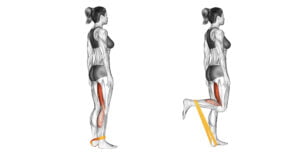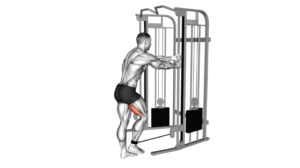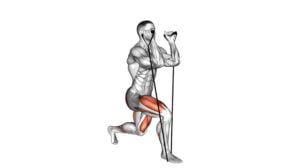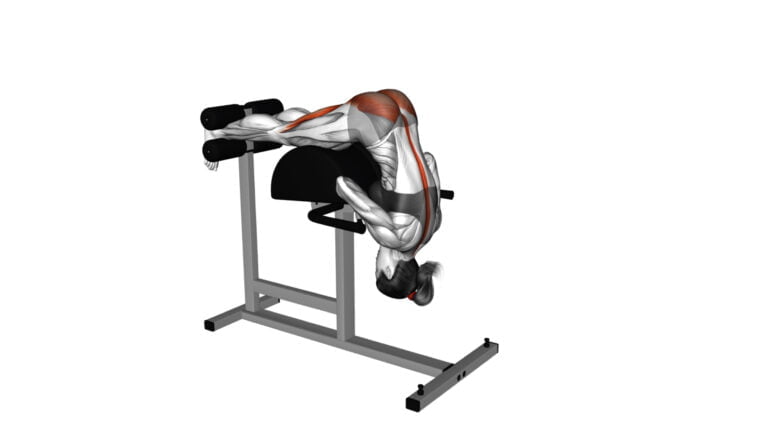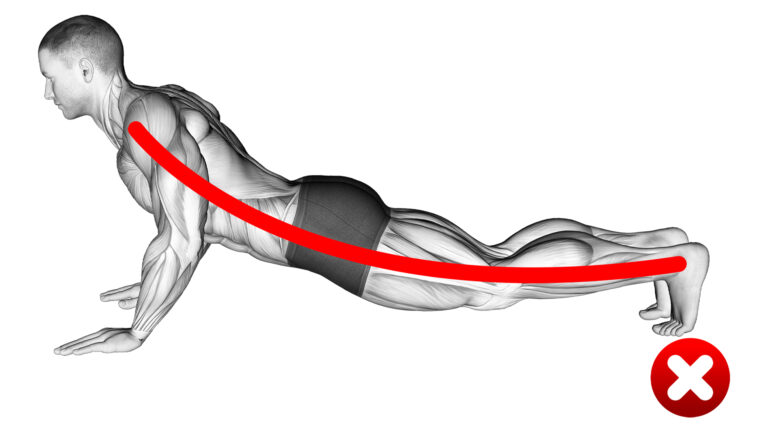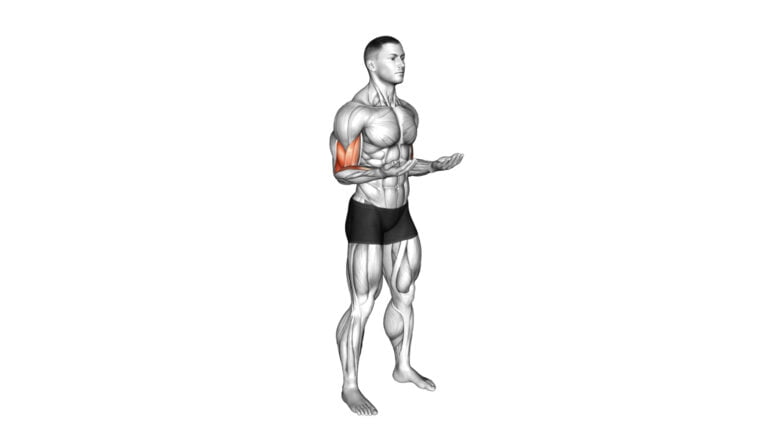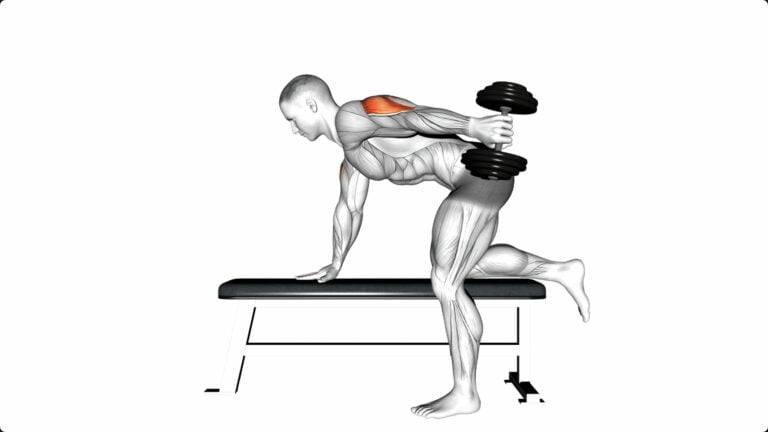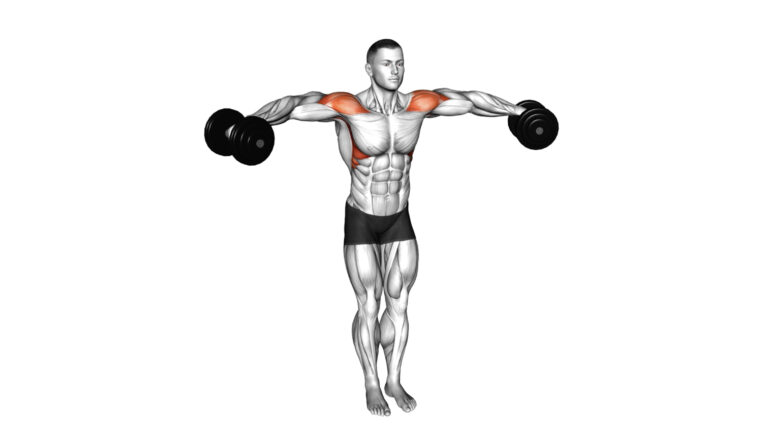5 Effective Hamstring Exercises With Kettlebells For Stronger Legs
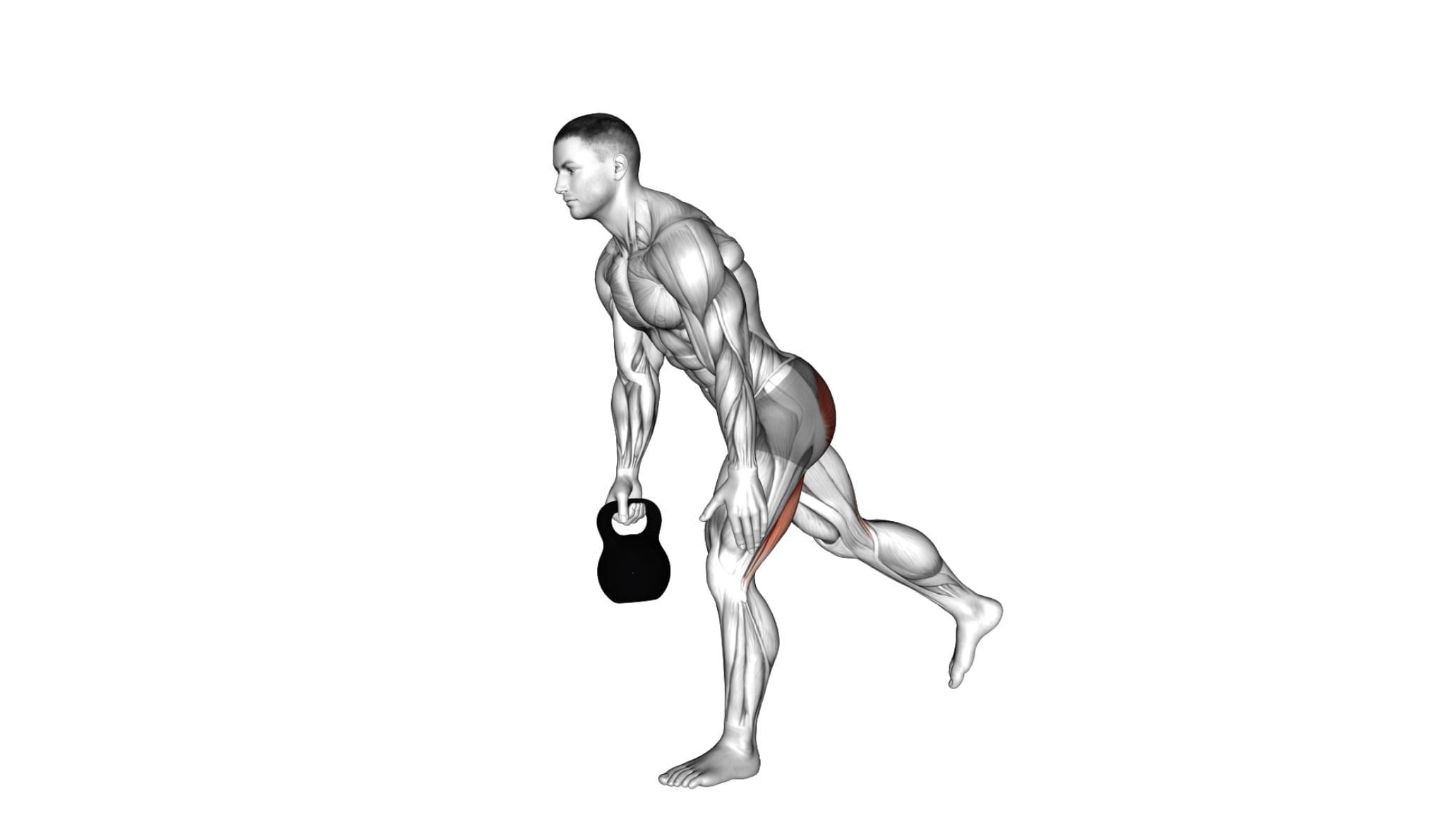
Hamstring strength isn’t just about sporting an impressive set of legs; it’s a cornerstone for robust health and athletic performance. Often overshadowed by the allure of developing the quads, hamstring training with kettlebells can be transformative, not only in achieving muscular symmetry but also in preventing injury.
With over a decade as a certified strength and conditioning specialist, I’ve witnessed firsthand how focused lower body training, particularly targeting hamstrings, substantially elevates one’s overall fitness.
Incorporating Hamstring Exercises With Kettlebells engages more than just your leg muscles; it challenges stability and coordination while delivering full-body benefits. Building on the dynamic nature of kettlebell movements ensures that you’re not merely isolating muscles but enhancing functional strength—the kind that serves you beyond the gym walls.

Stay with me, because if stronger hamstrings are your goal, these 5 effective exercises will guide your journey to powerful strides and sturdy stances. Ready for results? Let’s dive in!
Key Takeaways
- Kettlebell exercises like straight leg deadlifts and rotational deadlifts can improve your hamstring strength, knee stability, and hip mobility for better athletic performance and daily movement.
- Incorporating kettlebell workouts into your fitness routine also enhances speed, power, and muscle definition in the legs, contributing to a more balanced physique.
- It’s important to maintain proper form during kettlebell exercises to maximize benefits for the hamstrings while preventing injury. Gradually increase weight and intensity over weeks for progressive strength gains.
- Regularly training with kettlebells not only improves lower body strength but also positively impacts core stability, balance, and overall functional fitness.
- A personalized 4 – week progression plan of increasing resistance with kettlebells can lead to significant improvements in leg strength while minimizing injury risks.
Benefits of Training the Hamstrings with Kettlebells
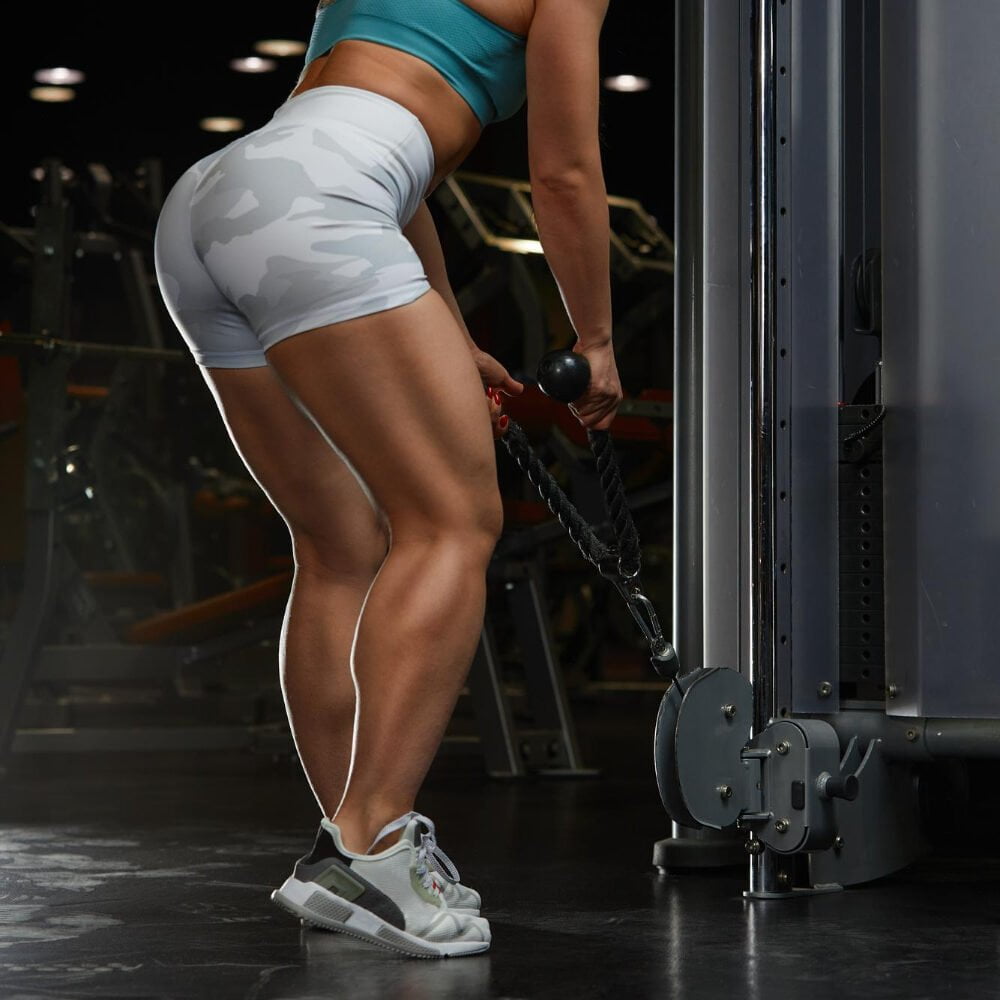
Training the hamstrings with kettlebells offers a range of benefits, including improved knee flexion, increased knee stability, enhanced speed and power, and aesthetic benefits. These exercises can also help in strengthening the hips and glutes for overall lower body strength.
Improved knee flexion
Enhancing your knee flexion can lead to improved mobility and a wider range of movements, which is essential for everyday activities like walking, running, or climbing stairs. Kettlebell workouts target the hamstring muscles—the semitendinosus, semimembranosus, and biceps femoris—which are crucial in bending your knees effectively.
With stronger hamstrings from consistent strength training using kettlebells, you’ll notice an easier time performing motions that require bending at the knee joint.
Stronger hamstrings also contribute significantly to protecting against injuries such as ACL tears. By incorporating exercises like kettlebell deadlifts and swings into your routine, you strengthen not only the muscles but also the supporting tendons around the knees.
This kind of resistance training ensures that all elements work cohesively to support knee flexion without jeopardizing stability or risking injury to your anterior cruciate ligament.
Increased knee stability
Knee stability is crucial for everyone, from runners to weightlifters. Strong hamstrings play a vital role in keeping your knees steady and secure. When you perform hamstring exercises with kettlebells, you’re not just working on the muscles at the back of your thighs; you’re also reinforcing the ligaments around your knee joints.
Exercises like goblet squats and Romanian deadlifts force your body to stabilize itself, engaging more than just your hamstrings.
Training with kettlebells targets multiple muscle groups at once. This compound movement approach means that each exercise contributes to better coordination and balance throughout your lower body.
The dynamic nature of kettlebell swings, for example, challenges both stability and control as you move through different planes of motion. As a result, this can help prevent injuries such as ACL tears by ensuring that all parts of the leg are strong enough to support the knee during various activities.
Enhanced speed and power
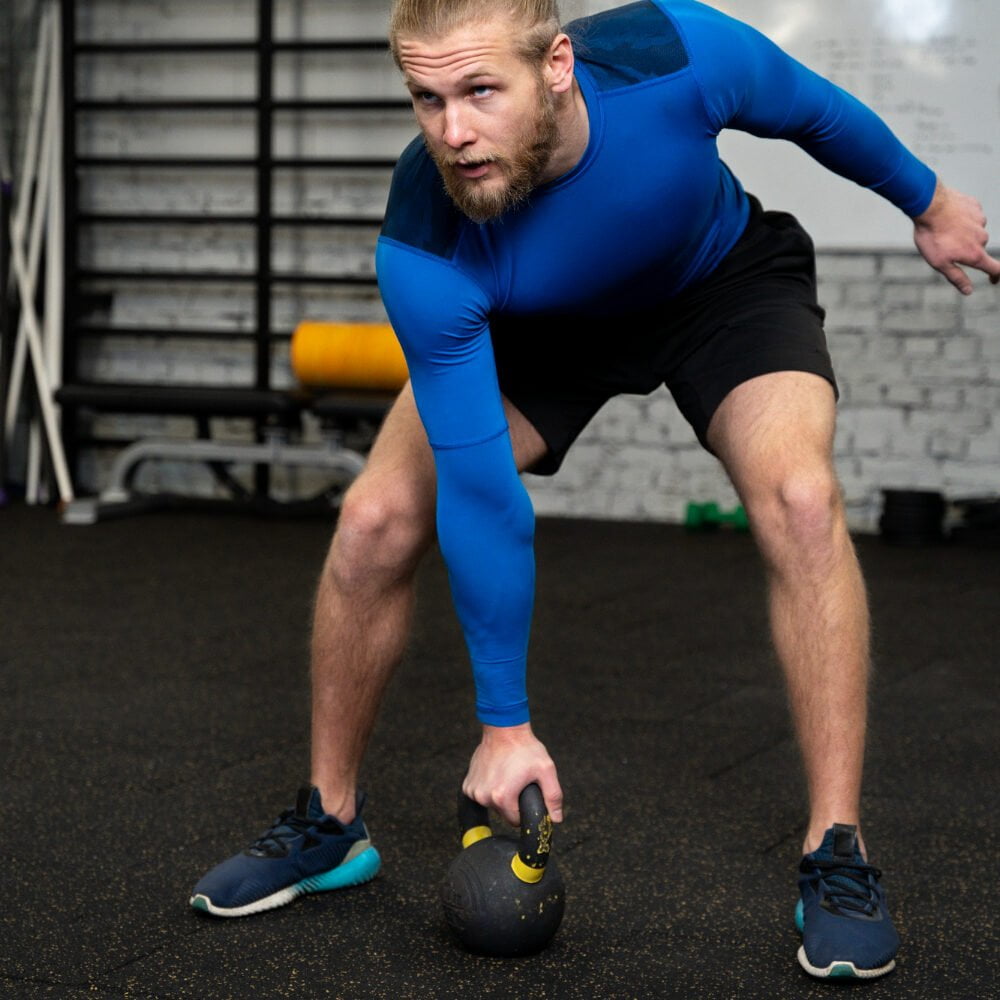
Training hamstrings with kettlebells isn’t just about building muscle; it also dramatically boosts your speed and power. Imagine sprinting faster, jumping higher, and lifting heavier, all because you’ve added these dynamic movements to your workout regime.
Kettlebell exercises engage the entire posterior chain—muscles that are critical for explosive actions. Each swing, lift or squat translates to improved performance where you need it most: on the track, court or field.
Engaging in routines like the kettlebell deadlift forces muscles to work in concert, which not only strengthens individual muscles but also teaches them to activate simultaneously during athletic endeavors.
Your feet drive into the ground while your pelvis braces; this coordinated effort results in significant gains in raw athleticism. Harnessing this newfound strength can mean outrunning opponents or making game-changing plays—all thanks to a well-crafted hamstring workout plan that includes kettlebells.
Next up is understanding how these workouts translate into aesthetic benefits for an all-around stronger physique.
Aesthetic benefits
Developing strong, defined hamstrings through kettlebell exercises can contribute to a more balanced and aesthetically pleasing physique. Sculpted hamstrings not only enhance the overall appearance of the legs but also promote symmetry in the lower body, creating a toned and athletic look.
By targeting these muscles effectively with kettlebell workouts, individuals can achieve a leaner and more defined appearance in their lower body, which complements other muscle groups for an overall aesthetic improvement.
Strengthening the hamstrings through focused kettlebell exercises contributes to improved muscle tone, producing a sleeker and more sculpted look. These defined muscles lend themselves to a visually appealing lower body profile, enhancing one’s physical presence and boosting confidence in personal appearance.
The 5 Best Kettlebell Exercises for Stronger Hamstrings
Mastering these kettlebell exercises will help you build stronger hamstrings and improve your overall lower-body strength. Read more to learn how!
1. Kettlebell Straight Leg Deadlift
To perform the kettlebell straight leg deadlift, stand with your feet shoulder-width apart and hold a kettlebell in each hand. Keeping your back flat and core engaged, hinge at the hips to lower the kettlebells towards the ground while maintaining a slight bend in your knees.
Once you feel a stretch in your hamstrings, return to standing position by driving through the heels and squeezing your glutes.
The kettlebell straight leg deadlift targets the hamstrings, glutes, and lower back muscles, promoting strength and stability throughout the posterior chain. It also enhances hip mobility and reinforces proper hip hinging mechanics essential for everyday movements like bending over or picking up objects from the ground.
2. Kettlebell Rotational Deadlift
The kettlebell rotational deadlift engages the hamstrings, glutes, and lower back muscles. Start in a standing position with your feet shoulder-width apart, holding the kettlebell in front of you with both hands.
Lower the kettlebell towards one foot while simultaneously rotating your torso. Keep your back straight and chest up throughout the movement to maximize hamstring activation.
As you lift the kettlebell back up, rotate your torso to return to the starting position. Complete all repetitions on one side before switching to maintain balance and stability. This exercise targets different areas of the hamstrings due to its rotational nature, making it an effective addition to any hamstring-focused workout routine.
3. Kettlebell One Legged Deadlift
The Kettlebell One Legged Deadlift targets the hamstrings, glutes, and lower back. Stand with your feet hip-width apart, holding a kettlebell in one hand. Hinge at the hips and lift one leg straight behind you while lowering the kettlebell toward the ground.
Keep your back straight and return to standing position by engaging your glutes and hamstrings.
Engage your core muscles for stability throughout the movement. This exercise challenges balance, coordination, and unilateral strength, making it an effective addition to any leg workout routine.
4. Kettlebell Deadlift
The Kettlebell Deadlift targets the hamstrings, glutes, and lower back muscles. Stand with feet shoulder-width apart and a kettlebell between them. Hinge at the hips as you grasp the kettlebell handle firmly with both hands.
Keep your back flat and chest lifted as you push through your heels to stand up straight, squeezing your glutes at the top of the movement. Lower the kettlebell back down under control to complete one repetition.
By incorporating Kettlebell Deadlifts into your workout routine, you can effectively strengthen your posterior chain while improving hip mobility and overall functional strength for daily activities.
5. Kettlebell Hang Clean
Transitioning from the powerful movement of the Kettlebell Deadlift, we come to the dynamic and explosive exercise known as the Kettlebell Hang Clean. This exercise not only targets the hamstrings but also engages various muscle groups to improve overall strength and power.
To perform a Kettlebell Hang Clean, begin by holding a kettlebell in each hand at arm’s length with an overhand grip. Keep your feet shoulder-width apart and slightly bend at the hips and knees.
Next, explosively extend your hips and knees while shrugging your shoulders, pulling the kettlebells up towards your shoulders. Then “catch” the kettlebells with bent elbows before standing up straight.
This explosive movement works to strengthen not only your hamstrings but also your glutes, core, forearms, and shoulders.
Sample Workout Routine for Stronger Hamstrings
Try incorporating these kettlebell exercises into your routine for stronger and more powerful hamstrings. Read on to discover the proper form and techniques, as well as how to progress over 4 weeks for optimal results.
Proper form and technique
Maintaining proper form and technique is crucial for maximizing the effectiveness of kettlebell exercises for stronger hamstrings. Ensure that your back remains straight throughout each movement, avoiding any rounding or arching of the spine.
Engage your core muscles to stabilize your body and support the lower back. Keep a slight bend in your knees while hinging at the hips to protect them from strain.
Focus on controlled movements, emphasizing the stretch and contraction of your hamstring muscles with each repetition. As you perform kettlebell exercises, maintain a smooth and steady motion without jerking or swinging the weight.

Progression over 4 weeks
Transitioning from proper form and technique, progressing over four weeks allows for gradual strengthening and adaptation. Here’s a detailed breakdown of the 4-week progression plan:
- Week 1: Begin with lighter kettlebells to focus on mastering the correct form and technique while performing each exercise. Aim for 2-3 sets of 10-12 repetitions per exercise to establish a strong foundation.
- Week 2: Increase the weight of the kettlebells slightly to introduce a moderate challenge. Maintain focus on proper form while aiming for 3 sets of 8-10 repetitions per exercise to build strength.
- Week 3: Progress further by adding more resistance to your kettlebell exercises, pushing your muscles to adapt and grow stronger. Perform 3-4 sets of 6-8 repetitions, ensuring controlled movements and engaging your hamstrings effectively.
- Week 4: Introduce the heaviest kettlebells you can handle with good form, focusing on pushing yourself within safe limits. Complete 4 sets of 6-8 repetitions, aiming for maximum engagement of your hamstrings while maintaining proper technique throughout.
Reaping the benefits
Building a strong and powerful lower body can lead to improved athletic performance and reduced risk of injury. By incorporating kettlebell exercises focused on the hamstrings into your workout routine, you can expect increased knee stability, enhanced speed, and power.
Moreover, training your hamstrings with kettlebells can also contribute to aesthetic benefits by promoting muscle growth and definition in the posterior chain. Additionally, strengthening these muscles will improve posture and overall lower body functionality.
Engaging in regular workouts targeting the hamstrings with kettlebells allows for balanced development of the leg muscles while boosting core strength. As a result, you’ll witness an improvement in both flexibility and proprioception.
Conclusion

To wrap up, you’ve learned about five effective hamstring exercises using kettlebells that can significantly strengthen your legs. These exercises are practical and easy to incorporate into your workout routine, providing an efficient way to achieve stronger leg muscles.
By consistently performing these kettlebell exercises, you can experience notable improvements in knee stability, speed, power, and aesthetic appeal. For further guidance or support on enhancing your leg strength with kettlebells, consider consulting a fitness professional who can provide personalized assistance.
Embrace the opportunity to challenge yourself and elevate your fitness journey by implementing these dynamic strategies for stronger hamstrings!
FAQs
1. What are some kettlebell exercises that strengthen hamstrings?
Kettlebell exercises like deadlifting, sumo squats, and the kettlebell good-morning focus on building strong hamstring muscles.
2. Can working with kettlebells help prevent ACL injuries?
Yes, performing exercises such as lunges and single-leg movements can improve lower leg stability and may aid in preventing ACL (anterior cruciate ligament) injuries.
3. Are kettlebells suitable for a full leg workout?
Definitely! Using kettlebells for moves like step-ups and squats works not just your hamstrings but also targets other key areas including quadriceps, calves, and glutes for a complete lower body workout.
4. Do I need to go to the gym or hire a personal trainer to do these hamstring workouts?
While trainers can guide you with proper technique, you can perform many effective hamstring strengthening exercises with kettlebells at home too!
5. Is it okay to use kettlebells for leg training after an ACL reconstruction surgery?
Consulting with medical professionals is essential before starting any exercise post-surgery; however, once cleared, controlled and properly executed workouts could be beneficial during recovery.
6. How can incorporating kettlebell hamstring exercises benefit my entire body?
Working out your hamstrings using exercises like deadlifts activates multiple muscle groups including lats, abdominal muscles, neck trapezius fibers as well as improving core stability which benefits overall bodily strength.

Author
Years ago, the spark of my life’s passion ignited in my mind the moment I stepped into the local gym for the first time. The inaugural bead of perspiration, the initial endeavor, the very first surge of endorphins, and a sense of pride that washed over me post-workout marked the beginning of my deep-seated interest in strength sports, fitness, and sports nutrition. This very curiosity blossomed rapidly into a profound fascination, propelling me to earn a Master’s degree in Physical Education from the Academy of Physical Education in Krakow, followed by a Sports Manager diploma from the Jagiellonian University. My journey of growth led me to gain more specialized qualifications, such as being a certified personal trainer with a focus on sports dietetics, a lifeguard, and an instructor for wellness and corrective gymnastics. Theoretical knowledge paired seamlessly with practical experience, reinforcing my belief that the transformation of individuals under my guidance was also a reflection of my personal growth. This belief holds true even today. Each day, I strive to push the boundaries and explore new realms. These realms gently elevate me to greater heights. The unique combination of passion for my field and the continuous quest for growth fuels my drive to break new ground.





